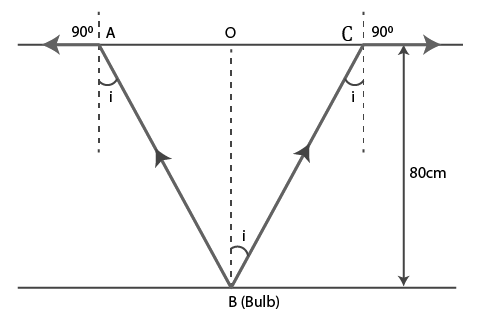
Answer :
We are given the following information –
Bulb’s actual depth in water is d1=80 cm =0.8 m
Refractive Index of water is ![]() = 1.33
= 1.33
I is the Angle of incidence
r is the Angle of refraction – 90°
The emergent light is deemed a circle because the bulb is employed as a point source.
R=![]() =AO=OB
=AO=OB
According to Snell’s law, we can express the relation for the refractive index of water in the following manner –
![]()
![]()
![]()
The relation is –
tan i=![]()
Therefore R=![]()
Area of the surface of water becomes –
=![]()
![]() is the area of water through which the light from the water can emerge out.
is the area of water through which the light from the water can emerge out.
